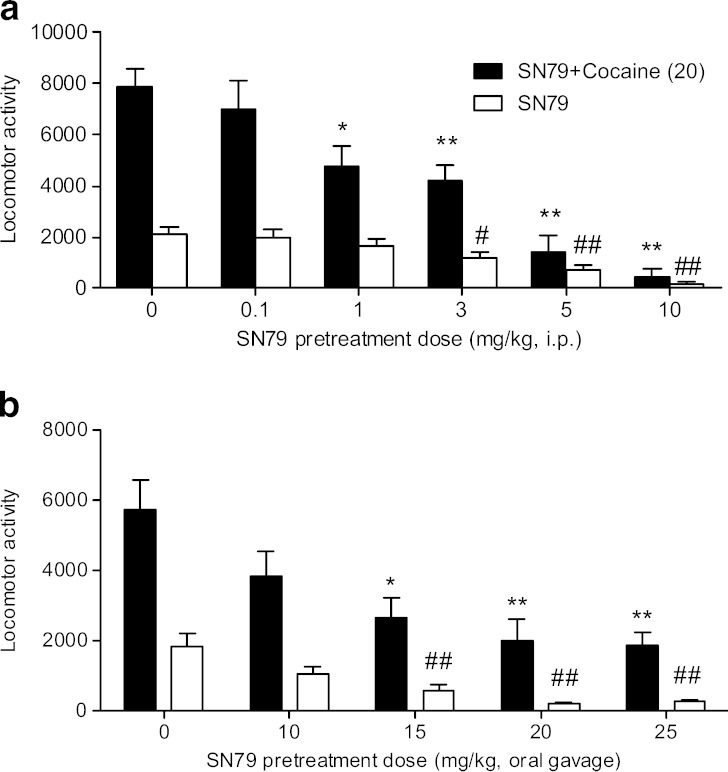Fig. 3.
a Effect of SN79 on cocaine-induced and basal locomotor activity. Male, Swiss Webster mice were pretreated (i.p.) with either SN79 (0.1–10 mg/kg) or saline followed 15 min later with a locomotor stimulant dose of cocaine (20 mg/kg, i.p., black bars) or saline (white bars). SN79 significantly attenuated the locomotor stimulant effects of cocaine, as well as basal locomotor activity. Data are expressed as mean ± S.E.M., *p < 0.05, **p < 0.01 (for comparison with cocaine), # p < 0.05, ## p < 0.01 (for comparison with saline), n = 10–12 per group. b Effect of orally administered SN79 on cocaine-induced and basal locomotor activity. Locomotor activity was recorded for 1 h following orally administered SN79 (white bars), which caused significant sedative effects at 15–25 mg/kg, p.o. Animals pretreated with oral administration of distilled water (0 mg/kg SN79 pretreatment) were then challenged with either a stimulant dose of cocaine (20 mg/kg, i.p., black bar) or saline (i.p., white bar); all other animals pretreated with oral dosing with SN79 (10–25 mg/kg) were challenged with cocaine (20 mg/kg, i.p., black bars). Cocaine-induced (20 mg/kg, i.p.) increases in locomotor activity were significantly attenuated by pretreatment with 15, 20, and 25 mg/kg, p.o. SN79. Data are expressed as mean ± S.E.M., *p < 0.05, **p < 0.01 (SN79 + cocaine compared to dH20 + cocaine), ## p < 0.01 (SN79 compared to distilled water + saline), n = 10 per group

